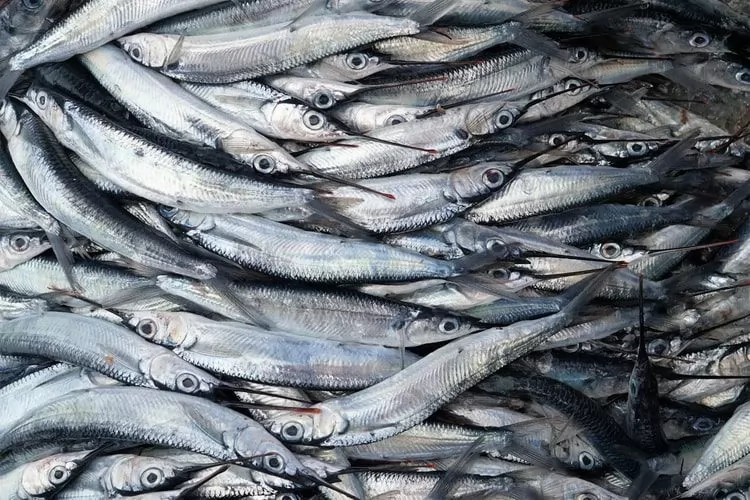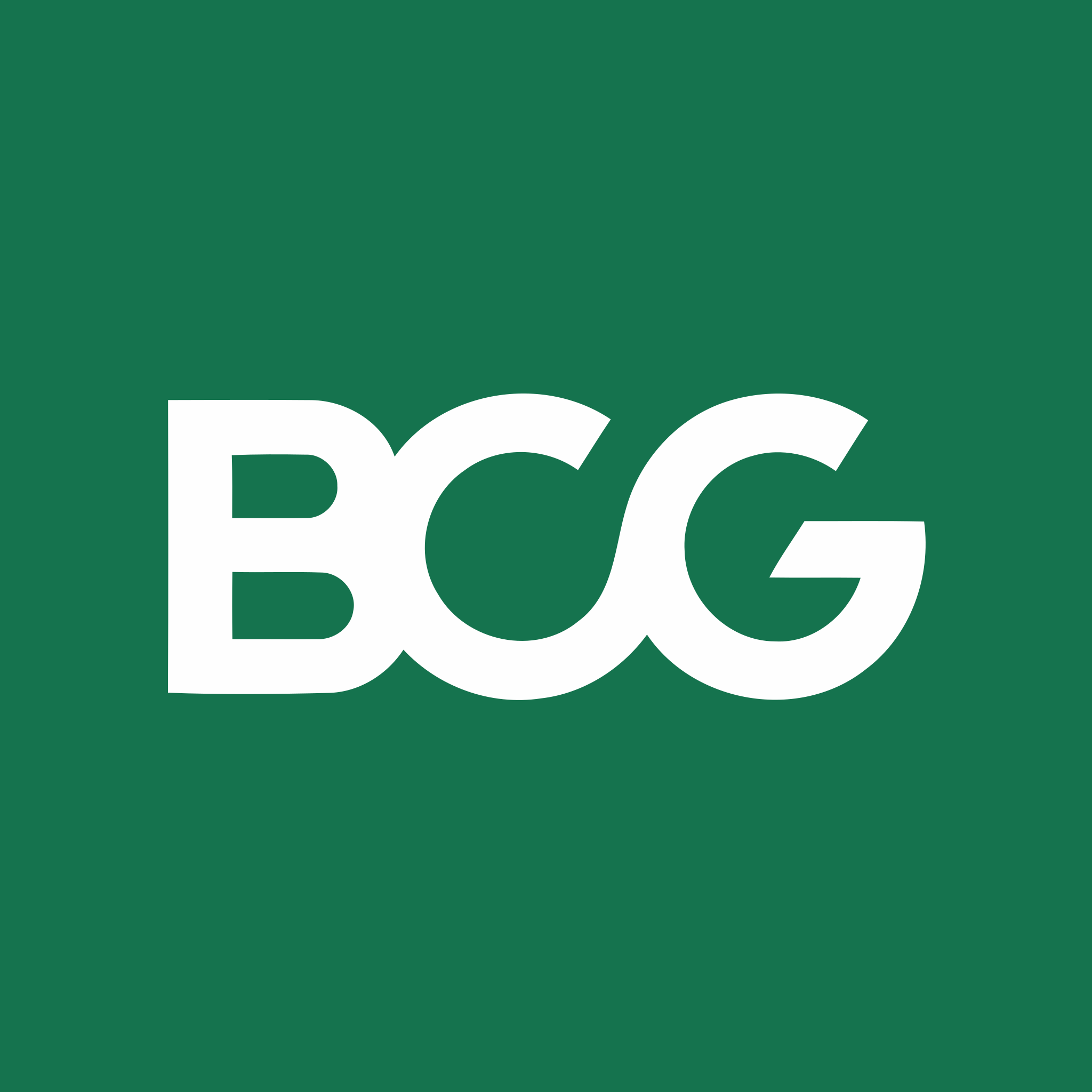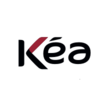Summary of our market study
The global seafood market, which includes the fish distribution market, has been experiencing steady growth, with an expected CAGR of approximately 2.5% from 2020 to 2027, potentially reaching a value of $194 billion by 2027. Despite this growth, there are structural challenges such as the depletion of marine species, affecting sustainability and market dynamics. In 2017, 66% of global fish stocks were at ecologically sustainable levels, a decline from 90% in 1974. The seafood consumption trend has also been on the rise, with per capita consumption increasing from 6 kg in 1950 to 20 kg in 2018, influenced by factors like population growth, higher disposable incomes, and improved distribution channels. Portugal stands out with the highest per capita seafood consumption in the EU at 56.8 kg yearly, attributing to its cultural significance and culinary heritage. The Portuguese market is distinctive, with a preference for traditional products such as cod (bacalhau) and sardines, displaying cyclicality in demand especially during the holiday season. The market exhibits a concentration among a few large players, with small producers struggling to match up. In terms of trade, Portugal imports significantly more seafood than it exports, with Spain being its primary trade partner for imports (36.56%) and exports (61.38%) post-2020. The EU's Common Fisheries Policy (CFP) continues to manage the sector with mechanisms like TACs and MSYs to ensure sustainable fishing practices, and the country's foreign trade has remained steady with a coverage rate around 43% since 2015.
Trends in the Portuguese seafood market
In the analysis of the Portuguese seafood market, we observe a rapidly growing demand for seafood products. At the heart of this surge in consumption are factors like the steady increase in the world population, higher disposable income, changing lifestyles, and evolving food preferences. Despite this growth, challenges such as the depletion of marine species have surfaced, potentially slowing market progress. Portugal stands out in this market due to its strong fish culture, with per capita seafood consumption soaring to impressive heights. In fact, Portugal, with its consumption of around 56 to 60 kilograms per capita annually, ranks among the top consumers globally, far exceeding European counterparts like Spain, which stands at about 40 to 50 kilograms per capita. The seafood market in Portugal is estimated at a significant value, equating to roughly 1 to 2 percent of the country's GDP. The preference among the Portuguese is toward fresh seafood, which dominates consumption. A notable aspect of the market is the high demand for processed seafood, particularly cod, which is deeply enshrined in the cultural fabric of the country, signifying more than half of the processed fish and non-fresh seafood sales. As we look closer at the commercial landscape, the market is heavily influenced by a few large conglomerates. Over the past few years, the number of companies in the processing and conservation of seafood products has seen a decrease, an indication of market consolidation. In terms of the fishing fleet size, there has been a decline from 8,700 to about 7,700 vessels since 2008. From the demographic perspective, the average Portuguese fisherman is middle-aged, working mainly in the Northern or Central regions, which collectively account for more than half of the country's professional fishermen. On the foreign trade front, Portugal's market dynamics are quite pronounced. The nation is more inclined towards imports, with a coverage rate averaging around 43 percent. This entails that Portugal's imports of seafood significantly outnumber exports, with Spain being the primary source of these imports, followed by Sweden and the Netherlands. In conclusion, Portugal's fish distribution market is a testament to the country's robust appetite for seafood, a preference that's rooted in tradition and influenced by the vast array of products available across the globe. Despite structural obstacles and market consolidation, the demand for fish and seafood in Portugal is expected to maintain its upward trajectory, particularly for products like cod which have a special place in the Portuguese diet and culture.
Key Players in the Portuguese Seafood Market
The Portuguese seafood market showcases a dynamic blend of local heritage companies and influential international players that have captured significant market shares through their expertise in processing, distribution, and retailing. As we delve into this segment of the market, we spotlight the leading entities that have made their mark.
- Traditional Canneries Setting the Standard Firstly, Cofaco - Comercial e Fabril de Conservas SA stands out as a beacon of Portuguese tradition in seafood canning. Known for preserving a wide range of seafood, Cofaco has established a strong reputation for quality that resonates with the cultural affinity for fish such as the cherished bacalhau. Ramirez, another bastion of the Portuguese canning industry, echoes this rich heritage. As one of the oldest operating canneries in the world, Ramirez has preserved the time-honored flavors of Portugal, securing its place in the hearts and kitchens across the nation.
- Processing and Distribution Titans Nomad Foods Ltd from the United Kingdom penetrates the market with a vast portfolio of frozen seafood products. As a formidable force in the industry, Nomad Foods caters to a broad European audience, ensuring a consistent supply of processed seafood delights. Grupo Pescanova SA, hailing from Spain, further enriches the Portuguese market with a plethora of seafood offerings. Known for their commitment to quality, Pescanova has carved out a significant niche in both processing and distributing seafood products. Angulas Aguinaga SA, another Spanish entity, boasts a fusion of innovation and tradition in its product line. Specializing in unique seafood preparations, the company has adeptly responded to varying consumer tastes and preferences. Conserveira do Sul Lda remains a notable mention, representing Portugal's vibrant local scene. Though smaller in scale compared to its international counterparts, this company has cemented its presence through dedication to the authenticity and excellence of its processed seafood products.
- Supermarket Sector's Pinnacle Players Pingo Doce stands tall as a supermarket giant in the Portuguese landscape. Its extensive network of stores provides a vital link between consumers and a comprehensive selection of seafood. Pingo Doce's emphasis on quality and accessibility has made it a go-to destination for fresh and processed seafood shopping. These players, with their diverse strengths and specializations, collectively uphold the robust structure of the Portuguese seafood market. From traditional canning methods to global import and export operations, they each play an integral part in fostering a vibrant seafood culture that’s deeply ingrained in Portugal’s identity.
to understand this market
Detailed content of our market study
 Inforamtion
Inforamtion
- Number of pages : 35 pages
- Format : Digital and PDF versions
- Last update :
 Summary and extracts
Summary and extracts
1 Market overview
1.1 Definition and scope of the study
The fish distribution market covers the consumption and sales of seafood products. The market is dominated by a few large wholesalers, who supply several thousand retailers.
Fish consumption is increasing rapidly worldwide, partly due to increased production, but also due to other factors such as improved distribution channels.
According to European Commission data, Portugal has the third highest per capita consumption of seafood in the world, just behind Norway and South Korea. Current seafood consumption habits are linked to geographical, cultural, historical and political factors. Portuguese seafood consumption is characterized by a great diversity of species and preparation methods, compared to other European countries. Cod (salted and dried), does not exist in Portuguese waters but, due to several historical and cultural factors, it has become the main species in the Portuguese seafood consumption, representing about 38% of the national seafood demand. [Jornal da Economia do Mar]
1.2 A growing world market despite structural obstacles
According to Allied Market Research, the seafood market is expected to grow at a CAGR of approximately *.*% over the period ****-**** to reach $*** billion.
Globally, the market is benefiting from several factors involving demand growth. Some of the factors driving the growth in demand include:
The steady increase in the world population, [***] ; The increase in disposable income; The evolution of lifestyles and food preferences of consumers.
Turnover of the seafood market World, ****-****, in billions of US$ Source: ****
However, the depletion of marine species [***] has slowed the growth of the market. Overexploitation of species continues to increase. According to the FAO (***) shows a declining trend, from **% in **** to **% in ****. On the other hand, over the same period, the percentage of global fish stocks fished at biologically unsustainable levels increased from **% in **** to **% in ****.
Fishing trend of the fish stock World, ****-****, in % Source : FAO The consumption of fish is destined to **% for food use and to **% for non-food use. Over the last ten years, food use has increased the most (***) while non-food use has remained stable. Per capita food consumption of fish has increased from * kg in **** to ** kg in ****, an average annual growth rate of about *%. The increase in ...
1.3 Focus on the European Union
Source: ****
The table above shows which fish are most consumed at a European level ; we can see that tuna accounts for the largest share (***) of consumption, and that the EU consumes an average of *.** kilos of tuna per year.
On the other hand, the highest rate of sufficiency (***), the EU relies on other global players.
Consumption of seafood products Europe, ****, in kg/capita/year Source: ****
Finally, the table above describes the per capita consumption in the EU. In first place is Portugal, with an annual consumption per capita of **.* kg, far ahead of Spain in second place (***). This shows the importance of marine products in the Portuguese diet.
1.4 The Portuguese market is strongly rooted in the fish culture
Portugal was in **** the leading country in seafood consumption per capita by value, with *** euros spent on average per Portuguese according to the European Fisheries and Aquaculture Market Observatory (***).
On the other hand, the Portuguese have the highest ratio between spending on fish and meat. Spending on fish and shellfish is about three times greater than spending on meat according to the same source. At the global level in the European Union, this ratio is one quarter, while large consumers of fish such as Italy or Spain have a ratio of one third or one half; this ratio can go up to ** times more expenditure on meat for Hungary. [***]
With a population of **,***,*** in **** [***], the market for seafood products in Portugal can therefore be estimated at EUR *.** billion this year (***), or *.*% of their GDP
Although Portugal is ahead of the other countries in terms of per capita consumption, its weight is greatly reduced when it comes to the total value of products consumed Portugal accounted for only *% of total fresh seafood consumption in **** among the ** countries analyzed by the EUMOFA in value.
Household consumption of fresh seafood (***) Europe, ****, in % Source: ****
This can be explained by a smaller population (***) and lower consumer ...
1.5 Foreign Trade
In order to analyse Portugal's external trade in fish and seafood, the following UN Comtrade code was used :
**: fish and crustaceans, molluscs and other aquatic invertebrates.
Portugal is more of an importer than an exporter for these products. In fact, in ****, they imported US$ *.** billion worth of fish and seafood while exports amounted to only US$ *.** billion. This is due to several factors. Firstly, the national demand is culturally strong, which implies that Portuguese production is mostly destined for local consumption. In addition, the Portuguese coast is concentrated on the Atlantic Ocean, so fishermen do not have access to certain types and species of fish that have to be imported to meet demand.
The country's coverage rate for these products (***) shows that this foreign trade structure is stable over time, as it has hovered around **% since ****. Portugal therefore annually imports more than twice as much as it exports fish and seafood.
Source: ****
Portugal's main supplier in this market is Spain (***). It is clear that Portugal's fish imports are partly due to the variety of products desired, among the * largest suppliers of Portugal, none has an Atlantic coastline except Spain.
Country of origin of seafood imports Portugal, ****, in % Source: ****
As for ...
2 Analysis of the demand
2.1 Per capita consumption of fish and seafood in Portugal
A study by eUMOFA (***).
Criteria for buying fish and seafood Portugal, ****, in % Source: ****
2.2 Typology of demand according to volumes purchased
Over the period ****-****, there was an average annual decline of *.*% in sales of fresh products, compared to an average annual increase of *.*% in consumption of processed seafood. Fresh seafood sales dropped to ***,*** tons in **** from ***,*** tons in **** and are expected to reach ***,*** tons by ****. Those of processed products, at **,*** tons in ****, reached **,*** tons in **** and are expected to grow to **,*** tons in ****.
Sales of fresh fish and seafood Portugal, ****-*****, in thousands of tons Source: ****
Sales of processed fish and seafood Portugal, ****-*****, in thousands of tons Source: ****
Demand for fresh products retains significant market share but is declining in volume to the benefit of an increase (***) in processed seafood.
2.3 Focus on processed seafood
The table below shows the sales of seafood products in Portugal according to industrial processing. Thus, we see that consumers are giving the lion's share to cod, which in **** represented more than **% of sales of fish and non-fresh seafood. Tuna preparations and cans, meanwhile, approached **% of sales, while those of sardines struggled to exceed *% of sales.
Source: ****
The same source segments sales of industrially processed fish and shellfish as follows :
Share of sales for processed fish products Portugal, ****, in % Source: ****
The preference of the Portuguese in terms of processed fish is clearly marked for frozen products, accounting for nearly half of processed fish and shellfish sales.
2.4 Holiday season creates a spike in demand
The cultural factor of demand also implies a certain cyclicality of demand, especially for cod/dried cod. Indeed, the bacalhau is a typical Portuguese Christmas meal and households flock to this product during the holiday season. To illustrate this phenomenon, we used Google Trends results for the search for "bacalhau" over the last * years (***).
Google Trends represents the proportion of searches for a given keyword́ in a region and for a specific time period, compared to when the rate of use of that keyword́ was highest (***). Thus, a value of ** means that the keyword was used half as much as it was at its peak during the analyzed period and a value of * means that there is insufficient data for that word.
Google Trends for the word "bacalhau" Portugal, ****-****, base *** Source: ****
Thus, we can see that each year the interest is stable (***) apart from during the festive periods, which represent the period of maximum interest for the product each year.
3 Market structure
3.1 Industrial fabric and market share
Despite the large number of companies, the market for fish, shellfish and molluscs in Portugal is dominated by a handful of large groups. Indeed, the market suffered a significant decline in the total number of companies following the global crisis of ****, before this figure started to slowly increase in ****. Moreover, ** groups hold **% of the market, leaving more than *** other entities to share the rest.
Number of companies in the processing and conservation of seafood products Portugal, ****-****, in units Source: ****
The Portuguese fishing fleet has also been declining since **** and there is no sign of recovery, illustrating the phenomenon of market concentration, where small producers are finding it increasingly difficult to keep up with the large groups. In ****, this fleet was *,*** fishing vessels against *,*** in **** and *,*** eleven years later.
Fleet of fishing boats Portugal, ****-****, in units Source: ****
This market concentration is particularly evident in the processed seafood sector, where the sector is quite concentrated, with the companies listed above holding **.*% of the market share, although they represent only *% of the number of companies in the sector. The table below summarizes the largest players in this segment in Portugal and their market share:
Source: ****
3.2 Distribution of products caught, by product
The table below summarizes the three most caught fish species in Portugal by category, as well as their quantity of tons caught and the percentage of this quantity in the country's total catch in ****:
Source: ****
Portuguese fish and shellfish production patterns can be interpreted by the types of fish caught.
Unsurprisingly, marine fisheries account for more than **% of the seafood caught in Portugal in ****. It is worth noting that mackerel alone accounts for almost a third of Portuguese fishing.
The molluscs such as octopus (***) are also important, with almost **% of the total seafood caught.
3.3 Geographic and demographic segmentation of fishers
The report of Pordata details the shares of fishers by age and the region in which they registered with the government structure of registered fishers.
Share of each region in the total number of fishers Portugal, ****, in % Source: ****
The northern and Central regions of Portugal account for more than half of the professional fishermen. The regions of Madeira and Alentejo have logically a very low number of fishermen: Madeira has only ***,*** inhabitants, barely *.*% of the Portuguese population, and Alentejo is a region without access to the Atlantic.
For mainland Portugal, the "Between ** and ** years old" group dominates with **.*% of the total. The rest of the population is evenly distributed, with **.*% of the total for fishermen between ** and ** years old, and **.*% for those over ** years old. The oldest fishermen in mainland Portugal are located in Lisbon and the Alentejo region, with **.*% and **.*% of those aged ** and over, respectively.
For the Autonomous Region of the Azores, the distribution is identical with **.*% of the population between ** and ** years old, **.*% between ** and ** years old, **.*% ** years old and over.
The average Portuguese fisherman is therefore middle-aged (***) and fishes in the Northern or Central region of the country.
Pordata adds that the number of fishing license grants ...
3.4 Market value chain
The first step in the supply chain is fishing or aquaculture. Then there is sanitary control of the fish harvest. In the second stage, the fish is processed. The four basic procedures used in the final processing of fish products are heating, freezing, water activity control (***) and finally reach the distribution.
4 Analysis of the offer
4.1 Main products fished or imported into Portugal
We can repeat the list of the main types of products fished in Portugal, used previously:
Source: ****
The Government of Canada also details the main seafood products imported into Portugal:
Main imported seafood products Portugal, ****, in % Source: ****
4.2 Estimated prices of the products presented
The prices of seafood products depend on their quality and scarcity as well as on the time of year. The table below gives an idea of what these prices can be in supermarkets.
Source: ****
4.3 Ranges are expanding and new products are appearing
Almost a third of the new products launched on the fish and shellfish market in Portugal concern an extension of an existing range: this can be the branding of a product (***).
But it is new products that account for the largest share of launches: **% of seafood product launches are new products. This is the case, for example, of Tastin Fillet of Atum in Algarvia, a new preparation based on tuna, egg and meat.
Finally, less than *% of seafood product launches involve new packaging or products relaunched after a break. It is never a reformulation of the product name.
Breakdown of product launches Portugal, ****, in % Source: ****
5 Regulation
5.1 Quotas: European management
European fisheries policy
Since ****, the European Fisheries Policy (***) has been responsible for regulating and organizing the entire fisheries sector. Several reforms have been put in place, the most recent of which was applied on January *, ****. According to the European Commission, the CFP has four main areas of action:
fisheries management ; international politics ; markets and trade policy ; policy funding ; production quotas .
European law has established the TAC (***), which aims to regulate the maximum quantity of fishing allowed in each area and for each species of fish. It is the responsibility of the European Commission to ensure the adoption of the TACs, based in particular on the evolution of the stocks thanks to the scientific studies carried out beforehand.
The European Commission then sets quotas for each Member State, which are then distributed among all the fishermen. These quotas are calculated according to an allocation key that takes into account the evolution of fish stocks.
This mechanism allows for a system of quota exchanges in a common pool, which enables Member States to ensure that their respective fishermen do not find themselves without fishing opportunities.
To know the European data, all the fishing possibilities can be found on the website of Cobrenord, the ...
6 Positioning of the actors
6.1 Segmentation
- Cofaco
- Ramirez & Co Filhos
- Angulas Aguinaga SA
- Nomad Foods Ltd
- Conserveira do Sul Lda
- AlgarFresco
- Pescanova 3
All our studies are available online in PDF format
Take a look at an example of our research on another market!
 Choosing this study means :
Choosing this study means :
Access to more than 35 hours of work
Our studies are the result of over 35 hours of research and analysis. Using our studies allows you to devote more time and added value to your projects.
Benefit from 6 years' experience and over 1,500 industry reports already produced
Our expertise enables us to produce comprehensive studies in all sectors, including niche and emerging markets.
Our know-how and methodology enable us to produce reports that offer unique value for money.
Access to several thousand articles and paid-for data
Businesscoot has access to all the paid economic press as well as exclusive databases to carry out its market research (over 30,000 articles and private sources).
To enhance our research, our analysts also use web indicators (semrush, trends, etc.) to identify market trends and company strategies. (Consult our paying sources)
Guaranteed support after your purchase
A team dedicated to after-sales service, to guarantee you a high level of satisfaction. +44 238 097 0676
A digital format designed for our users
Not only do you have access to a PDF, but also to a digital version designed for our customers. This version gives you access to sources, data in Excel format and graphics. The content of the study can therefore be easily retrieved and adapted for your specific needs.
 Our offers :
Our offers :
the fish and seafood market | Portugal
- What are the figures on the size and growth of the market?
- What is driving the growth of the market and its evolution?
- What is the positioning of companies in the value chain?
- Data from several dozen databases
5 reports pack (-15%) PT Portugal
- 5 reports at €75.6 excluding VAT per study to choose from our Portuguese catalogue for 12 months
- Save 15% on additional studies purchased
- Choose to be refunded any unused credit at the end of the 12-month period (duration of the pack)
See the terms and conditions of the pack and the refund of unused credit.


















